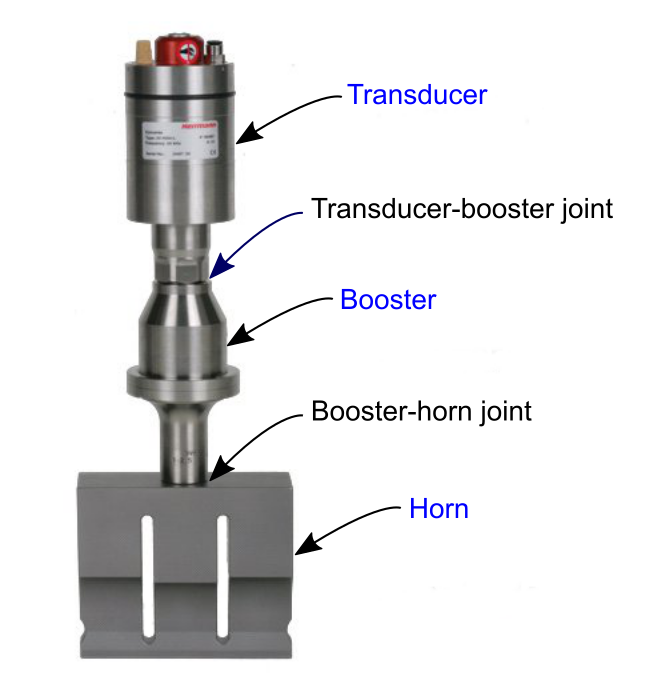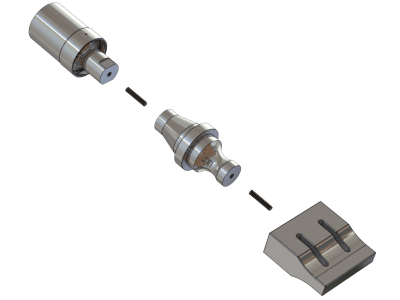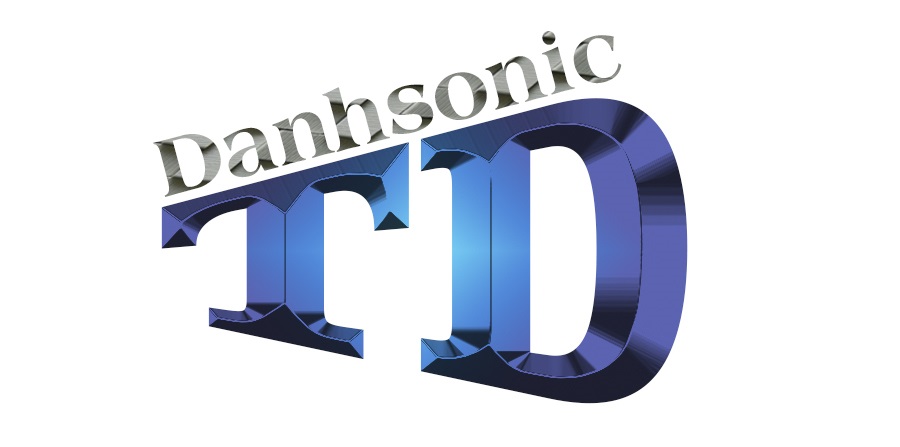Blog
Ultrasonic Resonators – Bộ cộng hưởng siêu âm
A joint is an interface (area of contact) between adjacent components of an ultrasonic stack. The purpose of the joint is to efficiently transfer ultrasonic energy across the joint and to provide axial and lateral stiffness to the assembled stack. Typical joints include the transducer-booster joint and the booster-horn joint.

| Figure 0. Joints for industrial ultrasonic stack (Herrmann Ultraschall) |
Joints are typically secured by threaded studs which permit easy assembly and disassembly. However, other means of securing (e.g., welding or adhesives) are sometimes used. Fretting at ultrasonic joints (especially those at high amplitude) is a common problem. Such fretting requires periodic joint maintenance.

| Figure 0a. Industrial ultrasonic stack assembly (ATCP) |
Joint locations
For axial mode vibration, resonators are designed to vibrate in half-wave increments where each end is an antinode. Hence, the antinode ends are natural attachment points between adjacent resonators (e.g., between the horn and booster). The ultrasonic (inertial) forces at these antinode joints are low so relatively little static force should be needed to adequately secure these joints.
In some cases, however, joints are located away from antinodes (e.g., for tips). Joints for many of the components in a piezoelectric transducer are located away from the antinode.
Required joint amplitude uniformity
BUC – 1-slot 4.5″ wide bar horn with ears.
Contact area
Contact between resonators usually occurs at the resonator’s nominal dimensions. For example, suppose a booster’s nominal output diameter is Ø40 mm in order to achieve the desired gain. Then it would normally be joined to the horn at the Ø40 mm diameter. However, this might not be optimal. In fact, there are several instances where a reduced contact diameter has shown improved performance. This reduced contact diameter is achieved by machining a short boss on either the output surface of the booster or the input surface of the horn. Since the boss height is small (e.g., 0.5 mm), the frequency and gain of the associated resonator are relatively unaffected.
Tip horns on composite horns
Contact us! Our Sales Engineers can help with all plastics joining applications, machine selection, inventory, pricing, and purchases.
Address: 280/18D Thạnh Xuân 25 St, Ward Thạnh Xuân, District 12, Hồ Chí Minh City.
Hotline: 0374003661 – 0969718871
Email: thanhdanhultrasonic@gmail.com


